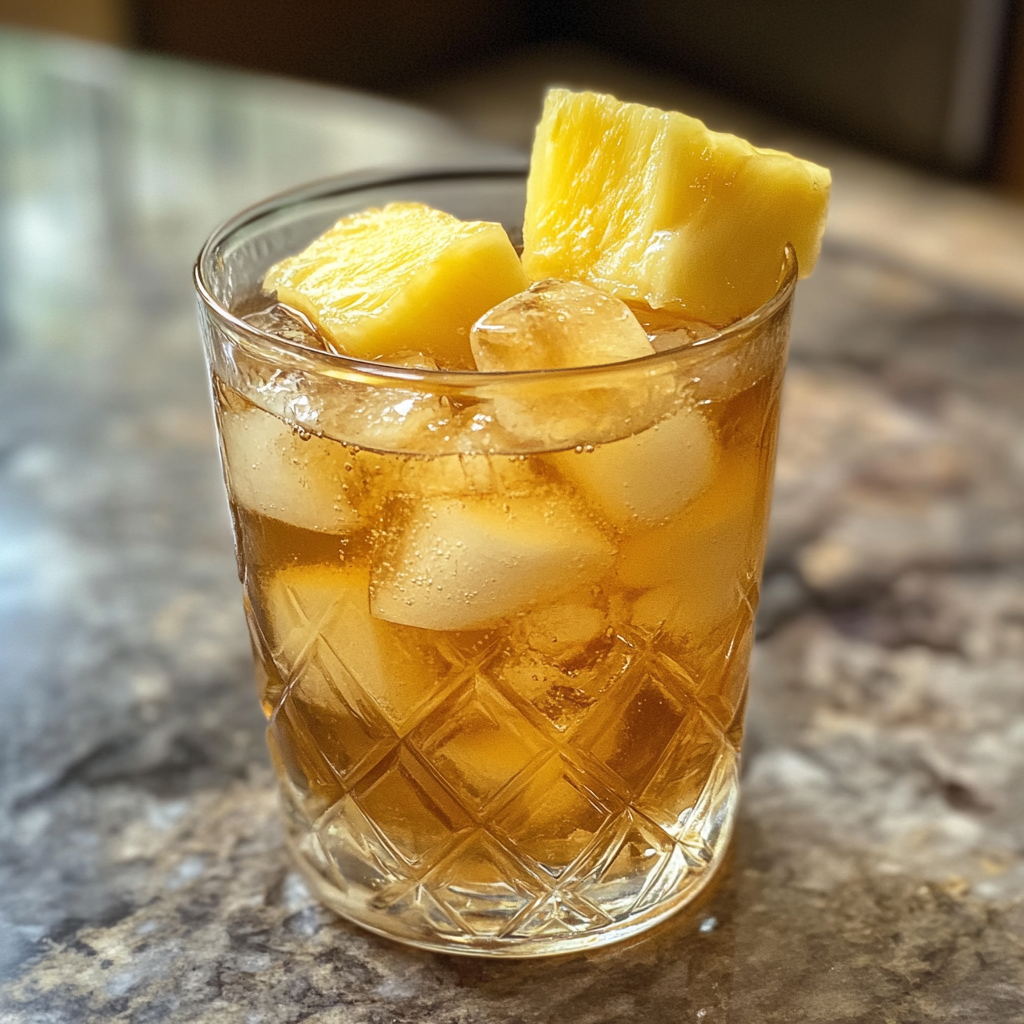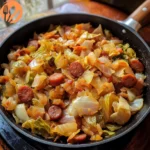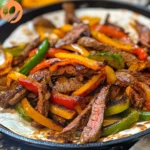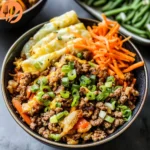Follow Me On Social Media!
Pineapple Iced Tea
start directly with example: ## Introduction
Introduction
Did you know that pineapple iced tea contains 25% more vitamin C than traditional black iced tea alone? This tropical twist on a classic beverage combines the antioxidant power of tea with the immune-boosting properties of fresh pineapple, creating a refreshing drink that's both delicious and nutritious. While many people think that flavored iced teas are complicated to make or require artificial syrups, homemade pineapple iced tea is surprisingly simple and infinitely more flavorful than store-bought versions.
This golden, refreshing beverage has become increasingly popular among health-conscious individuals who want to enjoy a sweet, tropical drink without the excessive sugar and artificial ingredients found in commercial alternatives. Whether you're hosting a summer barbecue, looking for a post-workout refresher, or simply want to elevate your daily hydration routine, this pineapple iced tea recipe delivers the perfect balance of sweet, tangy, and refreshing flavors that will transport you to a tropical paradise with every sip.

Ingredients List
Creating the perfect pineapple iced tea requires just a handful of fresh, quality ingredients that work together to create layers of tropical flavor:
Main Ingredients:
- 6 cups filtered water (divided: 4 cups for brewing, 2 cups cold)
- 6 black tea bags or 3 tablespoons loose leaf black tea (Ceylon or English Breakfast work beautifully)
- 2 cups fresh pineapple chunks, core removed (frozen pineapple works as a substitute)
- 1/4 cup honey or pure maple syrup (adjust to taste)
- 2 tablespoons fresh lemon juice (about 1 medium lemon)
- 1/4 teaspoon pure vanilla extract (optional, but adds depth)
- Fresh mint leaves for garnish (10-12 leaves)
- Ice cubes for serving
Substitution Options:
- Tea varieties: Green tea, white tea, or herbal fruit teas create different flavor profiles
- Sweetener alternatives: Agave nectar, stevia, or coconut sugar work well for different dietary needs
- Citrus options: Lime juice or orange juice can replace lemon for varied citrus notes
- Pineapple alternatives: Canned pineapple in juice (not syrup) works when fresh isn't available
Timing
Understanding the timing for this tropical pineapple iced tea recipe helps you plan perfectly:
- Preparation Time: 15 minutes (including pineapple chopping and ingredient assembly)
- Brewing Time: 5 minutes for tea steeping
- Cooling Time: 30 minutes (can be reduced with ice bath method)
- Total Active Time: 20 minutes
- Total Time Including Cooling: 50 minutes
Compared to store-bought alternatives that require a trip to the store, this homemade version takes minimal active preparation time while delivering maximum flavor and nutritional benefits.
Step-by-Step Instructions
Step 1: Prepare the Pineapple Base
Start by washing and peeling your fresh pineapple, then cut it into chunks, removing the tough core. Place the pineapple pieces in a blender with 1 cup of cold water and blend until smooth. This creates a vibrant pineapple puree that forms the tropical foundation of your iced tea. If you prefer a smoother texture, strain the mixture through a fine-mesh sieve, pressing the pulp to extract maximum flavor. For a more rustic, fiber-rich version, leave the puree unstrained.
Step 2: Brew the Perfect Tea Base
Bring 4 cups of filtered water to a rolling boil in a medium saucepan. Remove from heat and immediately add your tea bags or loose leaf tea. Steep for exactly 5 minutes for optimal strength – longer steeping can result in bitter tannins that overpower the delicate pineapple flavor. Remove tea bags or strain loose leaves, then stir in your chosen sweetener while the tea is still warm, ensuring complete dissolution.
Step 3: Combine and Balance Flavors
Pour the warm tea into a large pitcher and immediately add the pineapple puree, fresh lemon juice, and vanilla extract if using. Stir thoroughly to combine all flavors. The contrast between the warm tea and cool pineapple mixture begins the cooling process naturally. Add the remaining cup of cold water to achieve the perfect concentration.
Step 4: Cool and Chill
Allow the mixture to cool to room temperature, approximately 30 minutes. For faster cooling, place the pitcher in an ice bath or add a handful of ice cubes directly to the mixture. Once cooled, refrigerate for at least 1 hour to allow flavors to meld and develop complexity.
Step 5: Serve and Garnish
Fill tall glasses with ice cubes and pour the chilled pineapple iced tea over the ice. Garnish each glass with fresh mint leaves (gently bruise them first to release aromatic oils), a pineapple wedge, and a lemon slice for an Instagram-worthy presentation that tastes as good as it looks.
Nutritional Information
Each 8-ounce serving of this homemade pineapple iced tea provides approximately:
- Calories: 45-55 (depending on sweetener choice)
- Protein: 0.5 grams
- Carbohydrates: 12-14 grams
- Fiber: 1 gram
- Natural Sugars: 10-12 grams
- Fat: 0 grams
- Vitamin C: 35-40mg (40% daily value)
- Antioxidants: High levels from both tea and pineapple
Health Benefits: The combination of black tea and fresh pineapple delivers powerful antioxidants that support immune function and may help reduce inflammation. Pineapple contains bromelain, an enzyme that aids digestion and may help reduce bloating, making this an ideal post-meal beverage.
Healthier Alternatives for the Recipe
Transform this pineapple iced tea recipe to meet various dietary needs and health goals:
Low-Calorie Version: Replace honey with stevia or monk fruit sweetener, reducing calories to approximately 15-20 per serving while maintaining the sweet tropical taste.
Sugar-Free Option: Use only the natural sweetness from pineapple and add a few drops of liquid stevia if additional sweetness is desired.
Caffeine-Free Alternative: Substitute herbal fruit teas like hibiscus or chamomile for black tea, creating a naturally caffeine-free beverage perfect for evening consumption.
Keto-Friendly Version: Reduce pineapple to 1/2 cup and sweeten with erythritol or stevia to keep carbohydrates under 5 grams per serving.
Enhanced Antioxidant Boost: Add 1 tablespoon of fresh ginger juice and a pinch of turmeric for additional anti-inflammatory benefits.
Serving Suggestions
Elevate your pineapple iced tea experience with these complementary serving ideas:
Food Pairings: This tropical beverage pairs beautifully with grilled chicken, fish tacos, Asian-inspired salads, or coconut rice dishes. The acidity from pineapple and lemon helps cleanse the palate between bites of rich foods.
Garnish Upgrades: Create visual appeal with frozen pineapple chunks as ice cubes, fresh basil leaves instead of mint, or a rim of coconut flakes on glasses for extra tropical flair.
Party Presentation: Serve in large glass dispensers with cucumber slices, pineapple spears, and fresh herbs for self-service at gatherings.
Adult Version: Add a splash of white rum, coconut rum, or vodka for a refreshing cocktail variation.
Common Mistakes to Avoid
Prevent these frequent pitfalls when making pineapple iced tea:
Over-steeping the tea creates bitter, astringent flavors that compete with the sweet pineapple. Stick to the 5-minute steeping time for balanced flavor.
Using unripe pineapple results in overly tart, less flavorful tea. Choose pineapples that give slightly when pressed and have a sweet aroma at the base.
Adding sweetener to cold tea prevents proper dissolution. Always sweeten while the tea is warm, or create a simple syrup separately.
Skipping the cooling process and adding ice immediately dilutes the flavors. Allow proper cooling time for the best taste concentration.
Over-blending pineapple can create a foamy texture. Pulse blend until smooth but not aerated.
Storing Tips
Maximize freshness and flavor with proper storage techniques:
Refrigeration: Store prepared pineapple iced tea in an airtight glass pitcher or container for up to 4 days in the refrigerator. Glass containers prevent flavor absorption and maintain taste quality better than plastic.
Freezing Options: Pour tea into ice cube trays and freeze for up to 3 months. These flavored ice cubes are perfect for quick individual servings or for preventing dilution when serving.
Make-Ahead Strategy: Prepare the pineapple puree and tea base separately up to 2 days in advance, combining them when ready to serve for optimal freshness.
Flavor Maintenance: Stir gently before each serving, as natural separation may occur. Add fresh garnishes just before serving to maintain visual appeal and aromatic impact.
Conclusion
This homemade pineapple iced tea recipe proves that creating restaurant-quality beverages at home is both simple and rewarding. With just 20 minutes of active preparation time, you can enjoy a refreshing, nutritious drink that's free from artificial flavors and excessive sugars found in commercial alternatives. The combination of antioxidant-rich tea and vitamin C-packed pineapple creates a beverage that not only tastes incredible but also supports your health goals.
The versatility of this recipe means you can easily adapt it to suit any dietary preference or occasion, from casual family dinners to elegant summer entertaining. Ready to bring tropical paradise to your kitchen? Gather your ingredients, follow these simple steps, and discover how easy it is to create this refreshing pineapple iced tea. Don't forget to share your results and any creative variations you discover – your fellow tea lovers will thank you!
FAQs
Can I make pineapple iced tea without fresh pineapple?
Yes! You can use frozen pineapple chunks (thawed) or canned pineapple in juice (not syrup). Frozen pineapple actually blends more easily and creates a slightly thicker consistency. If using canned pineapple, reduce added sweetener since canned fruit tends to be sweeter.
How long does homemade pineapple iced tea last in the refrigerator?
Properly stored in an airtight glass container, your pineapple iced tea will maintain optimal flavor for 3-4 days. After this time, the tea may become slightly bitter and the pineapple flavor may diminish. Always smell and taste before serving if stored longer than 4 days.
Can I use green tea instead of black tea for this recipe?
Absolutely! Green tea creates a lighter, more delicate flavor that pairs beautifully with pineapple. Reduce steeping time to 3 minutes to prevent bitterness, and consider using slightly less pineapple to maintain balance. White tea and oolong tea also work wonderfully for different flavor profiles.
Is it possible to make this recipe sugar-free while keeping it sweet?
Yes, you can create a naturally sweet version by using very ripe pineapple and adding natural zero-calorie sweeteners like stevia or monk fruit. Start with small amounts and adjust to taste. The natural fruit sugars in ripe pineapple provide significant sweetness on their own.












